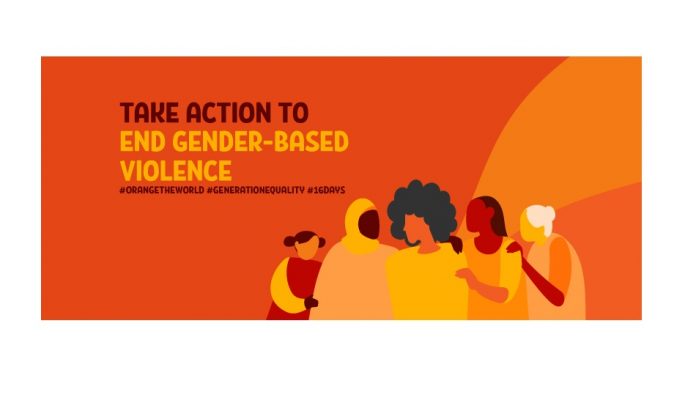Female drug users are a hidden portion of the population, according to researchers examining the issues of illegal drug use.
The drug scene is often seen as a male dominant environment. Media reports and research typically point to men or boys as key players involved in drug trafficking or as drug users. The drug scene is seen through a masculine framework from an economic perspective as well, meaning it is often men who profit from drug sales.
Of course, women and girls are also victims who suffer from illegal drug use. While men are simply described as ‘users’ or ‘traffickers’, a female drug user can be further burdened with a negative moral judgement by her community.
The global war on drug policy has also reached Myanmar. Women have been affected by these policies directly or indirectly at various levels. Existing gender inequalities have been amplified. This includes widespread discrimination toward female drug users, as well as gender based violence. The intersectionality nature of illegal drugs and its impacts on women is still new, but requires our attention.
Differential gender impacts
Women are impacted by drug policy differently than men. Women suffer social prejudices and community judgments as they are assumed and expected to be caregivers. A woman’s association with drugs negatively compromises these expectations. Women are often seen as failing to uphold assumed caregiving roles, once they are linked to the drug world.
Women often face gender based discrimination, and if involved in the drug economy they can endure a double jeopardy. This might include sharing needles, having unprotected sex, or being violated by their partners.
Part of the global war on drugs has included the eradication of opium cultivation. However, it is women who are largely involved in the agricultural sector, so ending opium production has an immediate economic impact on women’s labour.
In February 2018 Myanmar launched a new national drug control policy following the advocacy of many concerned stakeholders. The National Drug Control Policy is now more comprehensive and focuses on supply and harm reduction measures, emphasizes greater international cooperation, utilizes more research and analysis, and strives to ensure compliance with human rights.

Specific policy interventions targeting women or having a gender sensitive lens is not apparent in the new policy.
For example the National Drug Control Policy does not demonstrate integration of the Convention on the Elimination of all Forms of Discrimination Against Women (CEDAW).
Double Burden
The official Facebook page of the Central Committee of Drug Abuse Control (CCDAC) regularly provides updates on the number of drug cases in the country. This includes noting persons arrested, and amounts of drugs seized. This data source reveals that roughly half of those arrested are women. This data suggests there should be a gender sensitive system in place, not only for drug related offenses but for all criminal cases.
Such policies are possible, as evident in the United Nation Offices on Drugs and Crimes Bangkok Rule book which states; (Rule 4) “Women prisoners shall be allocated, to the extent possible, to prisons close to their home or place of social rehabilitation, taking account of their care-taking responsibilities, as well as the individual woman’s preference and the availability of appropriate programs and services.”
(Rule 15) states, “Prison health services shall provide or facilitate specialized treatment programs designed for women substance abusers, taking into account prior victimization, the special needs of pregnant women and women with children, as well as their diverse cultural backgrounds.”
Both our criminal justice system and healthcare systems must have a gender sensitive perspective guiding policies and practices.
Likewise we need institutional measures to monitor and prevent human rights abuses in prisons, detention facilities, and rehabilitation centers and these must also be gender sensitive.
Reaching women with health care services, specifically harm reduction services for those who have become entangled in illegal or addictive drug use, requires special efforts to meet their specific needs and social realities.
Harm reduction refers to policies, programs and practices that strive to reduce harm associated with the use of psychoactive or addictive drugs that make it difficult for people to stop taking these types of drugs.
Access to good treatment is important to step the cycle of drug abuse. Many people with drug problems are unable to get access to such treatment, especially women.
Gender based discrimination and limited access to treatment is contributing to female drug users being hidden within our society.
Advocating for a gender focus
There is growing interest in the unique intersection between drugs and gender.
Drug control policy responses must become more gender sensitive.
Likewise, community perception and judgemental stereotypes of women and girls who become entangled in the drug world must also be challenged.
Institutional responses and mechanisms must be gender sensitive to meaningfully address this hidden issue if we are to end violence and injustice experienced by female drug users suffering double burdens.
References:
The Republic of Union of Myanmar, National Drug Control Policy (2018)
United Nations Office on Drugs and Crime; United Nations Rules for the Treatment of Women Prisoners and Non-custodial Measures for Women Offenders with their Commentary, the Bangkok Rules
Macaulay, F. (2020), “Gendering Drug Policy”, Buxton, J., Margo, G. and Burger, L. (Ed.) The Impact of Global Drug Policy on Women: Shifting the Needle, Emerald Publishing Limited, pp. 23-32. https://doi.org/10.1108/978-1-83982-882-920200004
https://www.hri.global/what-is-harm-reduction
GDPO (May 2014) Developing drug policy: gender matters. GDPO Situational Analysis. Swansea University: Global Drug Policy Observatory
GDPO (June 2108) Gender and Drugs in Myanmar. GDPO Situational Analysis. Swansea University: Global Drug Policy Observatory
Dania Putri, ‘Women and Drugs in Myanmar: Beyond Harm Reduction’, Transnational Institute, 8 March 2018, https://www.tni.org/en/article/women-and-drugs-in-myanmar-beyond-harm-reduction

